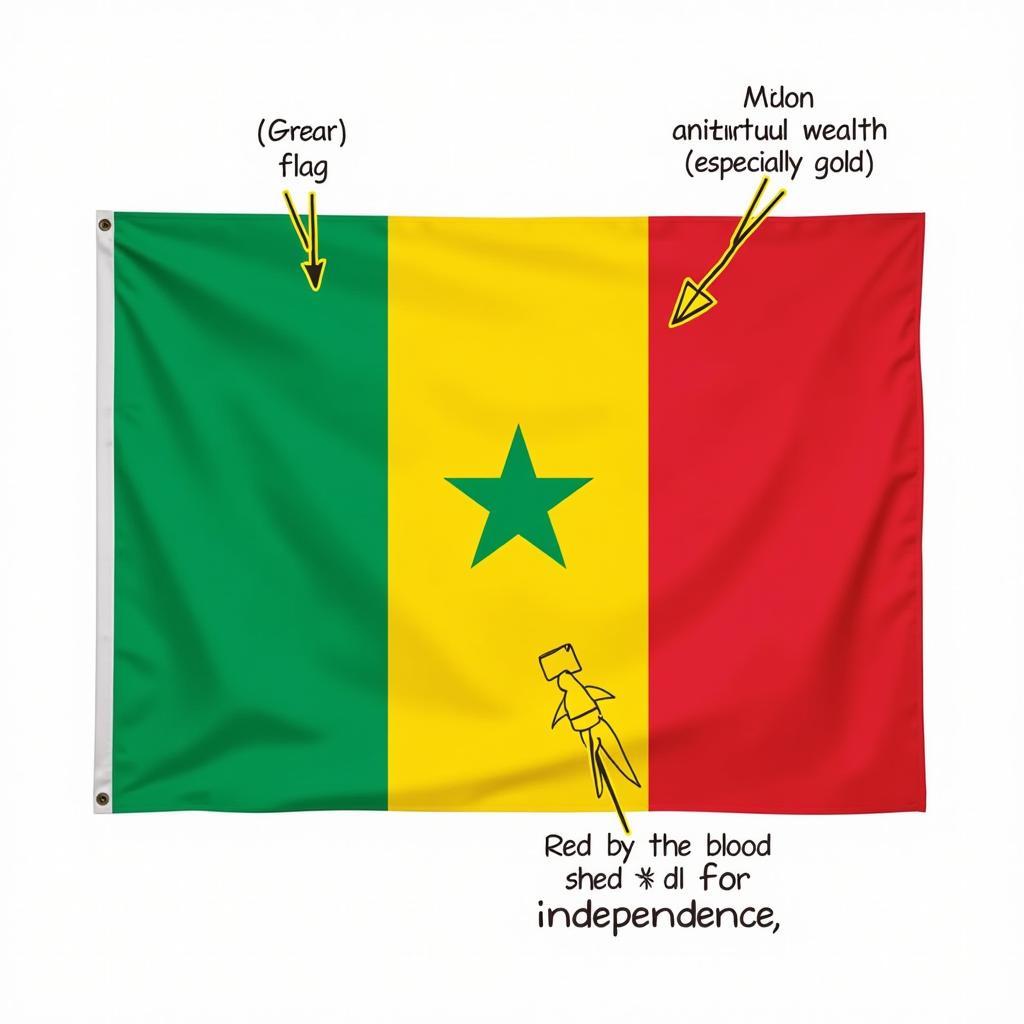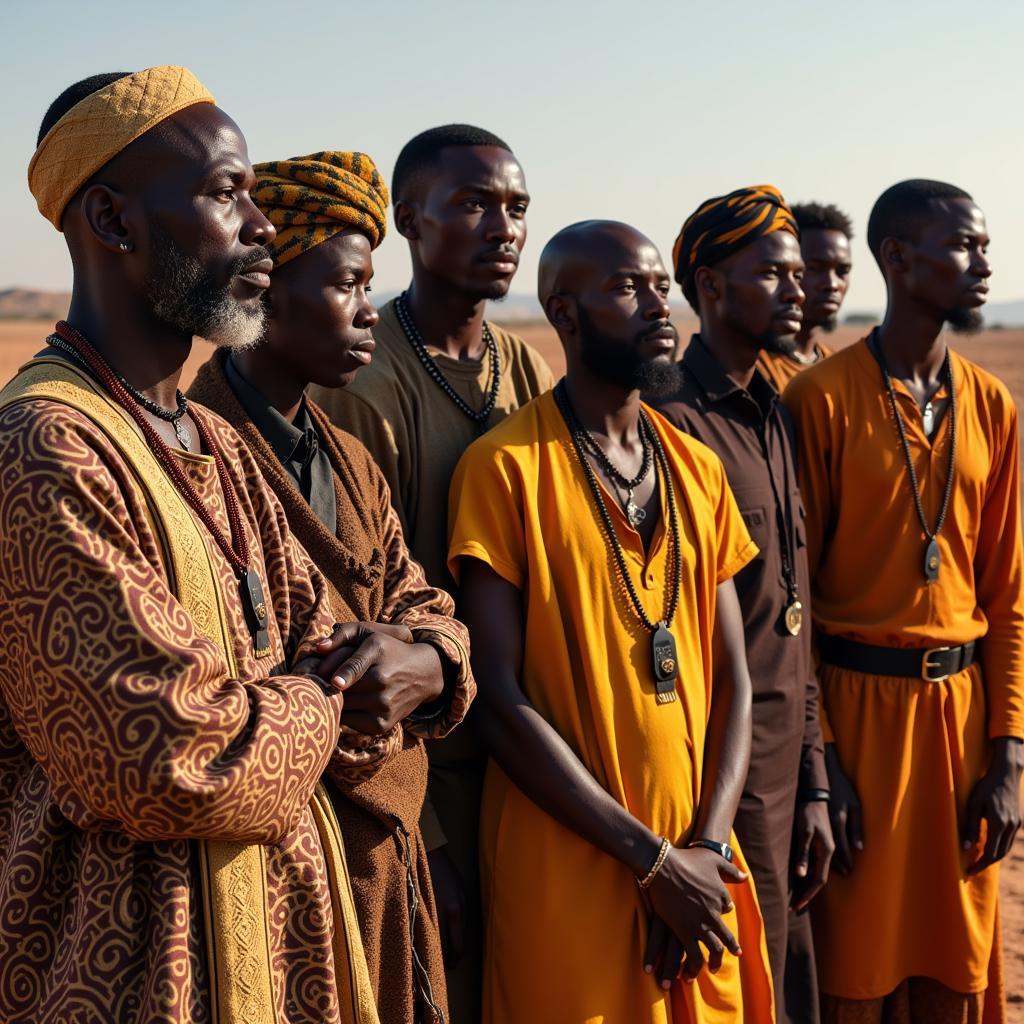Unveiling the African Country Flag of Mali: A Symbol of Unity and Pride
The African country flag of Mali is a striking tricolor of green, yellow, and red, embodying the nation’s rich history, cultural heritage, and aspirations for the future. This simple yet powerful emblem speaks volumes about Mali’s journey from ancient empires to its modern-day republic. Let’s delve deeper into the significance and symbolism behind the Malian flag.
The Meaning Behind the Colors of the Mali Flag
Each color on the Malian flag holds profound meaning, resonating with the country’s identity and values. The green stripe represents the nation’s agricultural wealth, the fertile lands that sustain its people, and the hope for continued growth and prosperity. Yellow, the central stripe, symbolizes the nation’s mineral resources, particularly gold, which has played a significant role in Mali’s history and economy. Finally, the red stripe signifies the blood shed by Malians in their struggle for independence from French colonial rule and their commitment to defending their sovereignty.
 Mali Flag Colors Meaning
Mali Flag Colors Meaning
A Brief History of the Malian Flag
The current Malian flag was adopted on March 1, 1961, shortly after the country gained independence from France. Originally, the flag featured a stylized human figure, known as the “Kanaga,” in the center yellow stripe. This figure, drawn from traditional Dogon art, represented the human form and the connection between humanity and the divine. However, in 1962, the Kanaga was removed due to secular concerns, leaving the simple tricolor we know today. This change reflects the evolution of Mali’s national identity and its commitment to a secular state.
The Mali Flag and its Place Among Other African Flags
The Malian flag, with its pan-African colors of green, yellow, and red, shares similarities with several other African flags. These colors, often associated with the Ethiopian flag, symbolize the shared struggle for liberation and the collective aspiration for a prosperous Africa. This visual connection highlights the solidarity and interconnectedness of African nations. You can compare the Malian flag with others on african flags and their names. It’s important to note the subtle differences in shade and arrangement, which contribute to each nation’s unique identity.
The Cultural Significance of the Mali Flag
The Mali flag is more than just a piece of cloth; it represents the nation’s collective identity, history, and aspirations. It serves as a unifying symbol that brings Malians together, reminding them of their shared heritage and common goals. From government buildings to schools and homes, the flag is displayed with pride, a testament to the deep patriotic sentiment it evokes. Moreover, the flag is often present at cultural events and celebrations, further solidifying its importance in the national consciousness. Discover more about the cultural features of different African countries at african features by country.
Mali Flag Protocol and Etiquette
Like any national symbol, the Malian flag is treated with respect and reverence. There are specific protocols regarding its display, handling, and disposal. For instance, the flag should always be flown in a dignified manner and never touch the ground. It should also be displayed prominently during national holidays and other important occasions.
 Mali Flag Display Protocol
Mali Flag Display Protocol
“The Malian flag is a powerful symbol of our resilience and our hopes for a brighter future,” says Dr. Aïssata Koné, a renowned Malian historian. “It represents the sacrifices made by our ancestors and the enduring spirit of our people.”
Another expert, Amadou Diarra, a prominent cultural anthropologist, adds, “The flag embodies the rich tapestry of our diverse cultures and traditions, binding us together as one nation.”
In conclusion, the African country flag of Mali is a powerful emblem of national unity, resilience, and cultural heritage. Its vibrant colors represent the nation’s agricultural and mineral wealth, as well as the sacrifices made for independence. The flag serves as a constant reminder of Mali’s rich history and its aspirations for the future, inspiring a sense of pride and patriotism among its people. For more insightful information on African topics, explore african antelope names.
FAQ
- What are the colors of the Mali flag?
- What do the colors of the Mali flag symbolize?
- When was the current Mali flag adopted?
- Why was the Kanaga removed from the Mali flag?
- What are some other African flags that share similar colors with the Mali flag?
Do you have other questions about Africa? Learn why are why are south africans white. You can also explore the logos of african airlines logo.
For further assistance, please contact us at Phone Number: +255768904061, Email: kaka.mag@gmail.com or visit our office at Mbarali DC Mawindi, Kangaga, Tanzania. Our customer service team is available 24/7.

